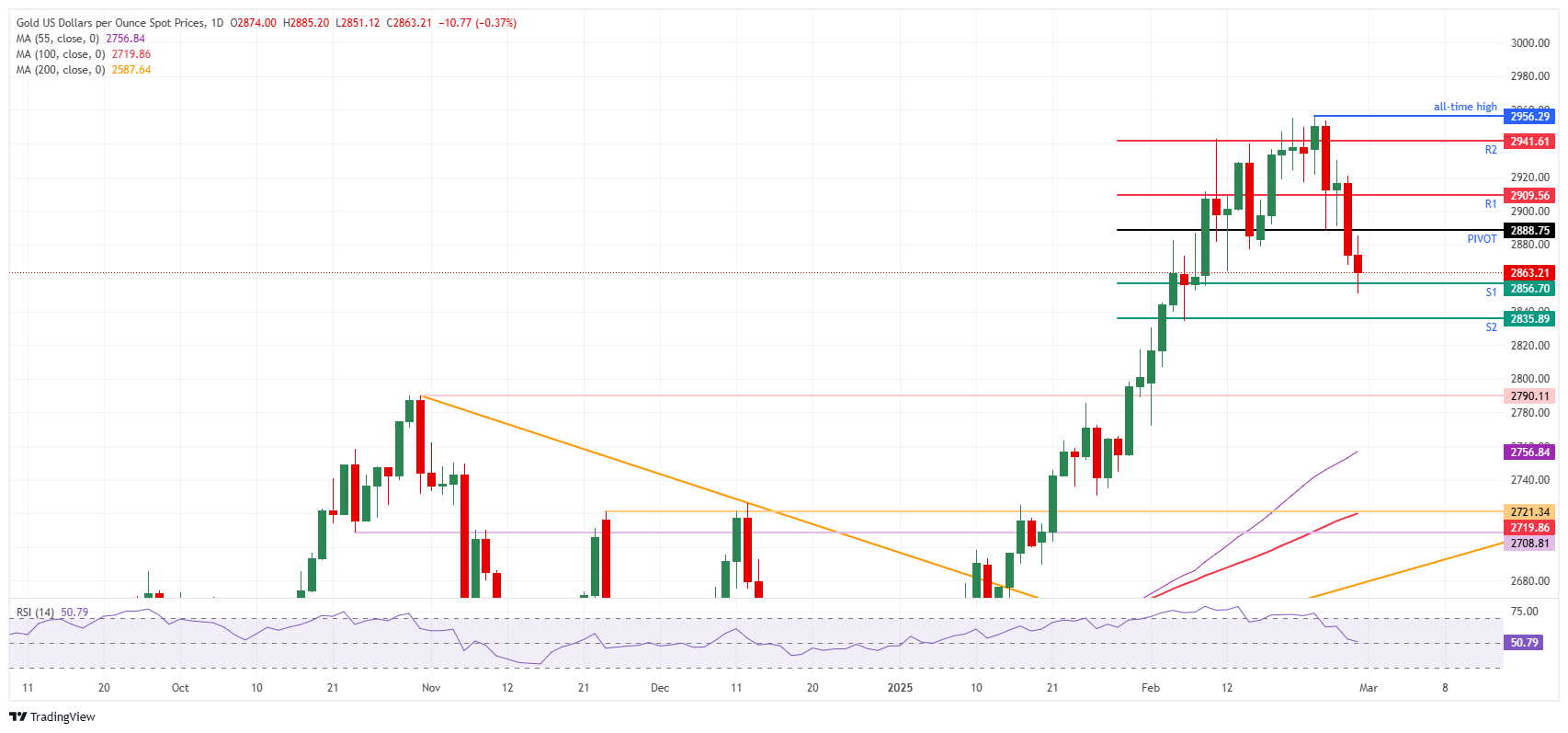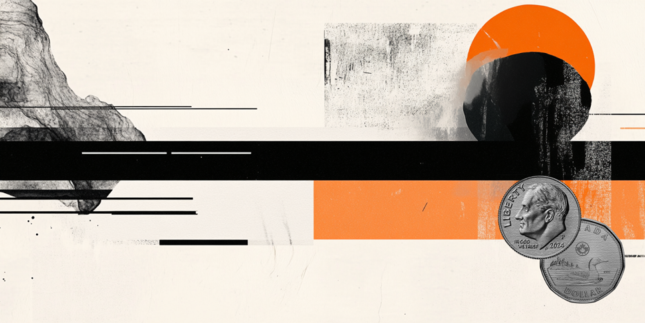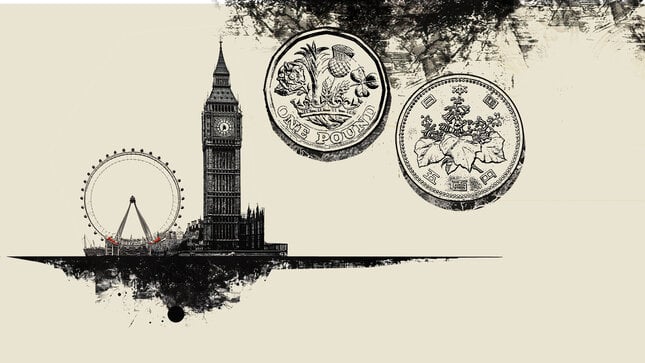Gold unable to get some relief after steady PCE reading
- US President Trump reiterated overnight Mexico and Canada tariffs will go into effect on March 4.
- US PCE data for January was no surprise for markets.
- Bullion is not considered a safe haven should a tit-for-tat war take place, although US yields are dropping off further.
Gold’s price (XAU/USD) is getting knocked out and is facing a substantial 3% loss since it printed a new all-time high at $2,956 on Monday at the start of this week. The precious metal currently trades at $2,860 at the time of writing, after United States (US) President Donald Trump reiterated that tariffs for Mexico and Canada will start on March 4, while China will see an additional 10%, raising the total rates to20% on imports into the US. This dampens hopes markets still had for a possible delay in the implementation of these tariffs.
Meanwhile, the US Personal Consumption Expenditures (PCE) numbers are out of January. No outside surprises with the monthly core PCE reading ticking up to 0.3% from 0.2%, as expected. The headline PCE reading came in at 0.3%, unchanged against the December number.
Daily digest market movers: March nearing
- Gold ETF’s (Exchange Traded Fund) are the sweet spot in China this year. Funds are swelling as the metal sets records, investors seek alternative assets, and local rules are tweaked to allow greater access. Onshore fund holdings increased by 17.7 tons in the first three weeks of February, close to the monthly record inflow of 20.9 tons set last October, according to data from the producer-funded World Gold Council, Bloomberg reports.
- In early European trading, the risk-off mood this Friday is seeing deep losses with indices in Asia booking multiple percentage losses near their closing bell. European ones are facing losses of over 1% intraday.
- The CME Fedwatch Tool sees chances for a June rate cut increase even further than Thursday. Odds are growing to a 71.8% chance approx for a rate cut against only 28.1% for keeping rates unchanged.
Technical Analysis: Unable to recover this week
The signs projected earlier this week are being proven right on Friday, with a near 3% loss in the precious metal so far this week. However, the fundamentals still look good for more upside in Gold, with tariffs still being a main theme and not just a one-off event. Look to support levels such as $2,790 to be ready and buy back in large amounts to participate in the next rally.
On the upside, the daily Pivot Point at $2,888 is the main level to look out for as resistance in the short term. That is just below the $2,900 big figure, and the daily R1 resistance at $2,909 is also in place. Thus, some chunky resistance makes recovering back to R2 resistance at $2,941 nearly impossible this Friday.
On the downside, vigilant Bullion buyers will surely be happy to pick up some Gold at interesting support levels. The S1 support at $2,856 looks rather feeble for now. Look to S2 support at $2,835 for broad support, ahead of $2,800 round level and $2,790. Indeed, that last level should see many buy orders waiting to be filled.

XAU/USD: Daily Chart
Interest rates FAQs
Interest rates are charged by financial institutions on loans to borrowers and are paid as interest to savers and depositors. They are influenced by base lending rates, which are set by central banks in response to changes in the economy. Central banks normally have a mandate to ensure price stability, which in most cases means targeting a core inflation rate of around 2%. If inflation falls below target the central bank may cut base lending rates, with a view to stimulating lending and boosting the economy. If inflation rises substantially above 2% it normally results in the central bank raising base lending rates in an attempt to lower inflation.
Higher interest rates generally help strengthen a country’s currency as they make it a more attractive place for global investors to park their money.
Higher interest rates overall weigh on the price of Gold because they increase the opportunity cost of holding Gold instead of investing in an interest-bearing asset or placing cash in the bank. If interest rates are high that usually pushes up the price of the US Dollar (USD), and since Gold is priced in Dollars, this has the effect of lowering the price of Gold.
The Fed funds rate is the overnight rate at which US banks lend to each other. It is the oft-quoted headline rate set by the Federal Reserve at its FOMC meetings. It is set as a range, for example 4.75%-5.00%, though the upper limit (in that case 5.00%) is the quoted figure. Market expectations for future Fed funds rate are tracked by the CME FedWatch tool, which shapes how many financial markets behave in anticipation of future Federal Reserve monetary policy decisions.
Forex News
Keep up with the financial markets, know what's happening and what is affecting the markets with our latest market updates. Analyze market movers, trends and build your trading strategies accordingly.












